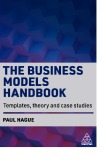Tài liệu Thư viện số
- Cơ khí, Chế tạo máy, Cơ điện tử (648)
- Công nghệ ô tô (227)
- Công nghệ thông tin (1246)
- Kỹ thuật Điện, Tự động hóa (433)
- Điện tử, Viễn thông (423)
- Lịch sử, Địa lý, Du lịch (214)
- Công nghệ Hóa, Môi trường (520)
- Công nghệ May & TKTT (186)
- Kế toán, Kiểm toán (500)
- Quản trị kinh doanh (1135)
- Tài chính - Ngân hàng (53)
- Ngôn ngữ (1926)
- Toán, Lý (374)
- Chính trị, Triết học, Pháp luật (316)
- Thể chất - GDQP (28)
- Văn học, xã hội (483)
- Đồ án, Khóa luận TN (6)
- Luận văn, luận án (3)
- Tài liệu tham khảo khác (825)
Danh mục TaiLieu.VN
- Mẫu Slide Powerpoint
- Luận Văn - Báo Cáo (346704)
- Kinh Doanh Marketing (67778)
- Kinh Tế - Quản Lý (50036)
- Tài Chính - Ngân Hàng (57809)
- Công Nghệ Thông Tin (143292)
- Tiếng Anh - Ngoại Ngữ (47261)
- Kỹ Thuật - Công Nghệ (137309)
- Khoa Học Tự Nhiên (110530)
- Khoa Học Xã Hội (85272)
- Văn Hoá - Nghệ Thuật (54491)
- Y Tế - Sức Khoẻ (177214)
- Nông - Lâm - Ngư (63475)
- Kỹ Năng Mềm (29084)
- Biểu Mẫu - Văn Bản (27862)
- Giải Trí - Thư Giãn (52535)
- Văn Bản Luật (199483)
- Tài Liệu Phổ Thông (409665)
- Trắc Nghiệm Online (213578)
- Trắc Nghiệm MBTI
- Trắc Nghiệm Holland
The Business Models Handbook Templates, Theory and Case Studies
Introduction: an overview of business and marketing models; How to design your marketing mix; Strengthening a product portfolio or strategic business units; A business model for improving marketing communications; Ansoff matrix: How to grow your company; Benchmarking: Setting targets for business and marketing KPI; Blue ocean: strategy Kick-starting innovation and new product development; Boston: Consulting Group (BCG) matrix Planning a product portfolio or multiple strategic business units; Brand audit: Improving the strength of a brand; Competitive: intelligence Assessing market strengths and weaknesses; Conjoint analysis: Assessing optimum pricing and the value of component parts; Customer: journey maps Assessing the current performance of marketing and sales processes; Customer: lifetime value Estimating customer spend over their lifetime with the company; Customer value: proposition Creating a compelling purchase motive; Diffusion: of innovation Launching new products and services; Directional: policy matrix How to prioritize segments or new ideas; Disruptive: innovation model Identifying unique ways of beating the competition; Edward: de Bono’s six thinking hats Brainstorming problems and generating new ideas; EFQM excellence model: Improving an organization’s quality and performance; Four corners: Analysing competitor strategies; Gap analysis: Improving areas of weakness in a company; Greiner’s growth model: Recognition and transition through different phases of company growth; Kano model: Identifying purchase motivations; Kotler’s five product levels: Adding value to a product or service; Market sizing: Assessing the size and value of a served or potential market; Maslow’s hierarchy: Differentiating market positioning; McKinsey 7S: A company ‘health check’ audit tool; Mintzberg’s 5Ps for strategy: Devising a competitive strategy
Thông tin trích dẫn: The Business Models Handbook Templates, Theory and Case Studies. Paul Hague. NXB Koganpage, 2019.
Vui lòng truy cập địa chỉ sau để download và biết thêm thông tin chi tiết: https://lic.haui.edu.vn/media/Kinh%20t%E1%BA%BF/The%20Business%20Models%20Handbook%20Templates,%20Theory%20and%20Case%20Studies%20conver.pdf
Bạn đọc có thể tìm thêm tài liệu tại Thư viện ĐH Công nghiệp Hà Nội tại địa chỉ: http://lib.haui.edu.vn/opac80/
Abstract
Business frameworks are at the heart of every successful business. They add structure and clarity to business problems and can help practitioners overcome the daily challenges they face. The Business Model Handbook brings together the most useful and widely used templates and frameworks into a single, invaluable resource. Each chapter focuses on an individual business framework, giving an overview of the 50 best known and how it will help an organization grow and become profitable. Each study is supported by a real-world case study, these include the ANSOFF matrix, Price-Quality-Strategy model, Stage Gate model, Service Profit Chain and many more.
Authored by a leading global market researcher with a background working on over 3,000 different research projects, The Business Model Handbook is an invaluable resource for any student or professional. which. Online resources include lecture slides tailored to each chapter.
As well as being an absolute must for any MBA student, this wonderfully curated collection of tools and models will not only save the lives of many business executives with a full-fledged presentation. challenge but can also make life a little better for their audience to haggle. Too much time is wasted in management meetings as businesses misuse or misunderstand these extremely important and valuable tools. Now there's no reason anymore
Since strategy is all about three things - execute, execute, execute - The Business Model Handbook is particularly useful as it not only discusses the most important business models, but also provides guidance. reality on how to use each model.
Paul Hague has created an amazing
Thông tin trích dẫn: The Business Models Handbook Templates, Theory and Case Studies. Paul Hague. NXB Koganpage, 2019.
Vui lòng truy cập địa chỉ sau để download và biết thêm thông tin chi tiết: https://lic.haui.edu.vn/media/Kinh%20t%E1%BA%BF/The%20Business%20Models%20Handbook%20Templates,%20Theory%20and%20Case%20Studies%20conver.pdf
Bạn đọc có thể tìm thêm tài liệu tại Thư viện ĐH Công nghiệp Hà Nội tại địa chỉ: http://lib.haui.edu.vn/opac80/
Abstract
Business frameworks are at the heart of every successful business. They add structure and clarity to business problems and can help practitioners overcome the daily challenges they face. The Business Model Handbook brings together the most useful and widely used templates and frameworks into a single, invaluable resource. Each chapter focuses on an individual business framework, giving an overview of the 50 best known and how it will help an organization grow and become profitable. Each study is supported by a real-world case study, these include the ANSOFF matrix, Price-Quality-Strategy model, Stage Gate model, Service Profit Chain and many more.
Authored by a leading global market researcher with a background working on over 3,000 different research projects, The Business Model Handbook is an invaluable resource for any student or professional. which. Online resources include lecture slides tailored to each chapter.
As well as being an absolute must for any MBA student, this wonderfully curated collection of tools and models will not only save the lives of many business executives with a full-fledged presentation. challenge but can also make life a little better for their audience to haggle. Too much time is wasted in management meetings as businesses misuse or misunderstand these extremely important and valuable tools. Now there's no reason anymore
Since strategy is all about three things - execute, execute, execute - The Business Model Handbook is particularly useful as it not only discusses the most important business models, but also provides guidance. reality on how to use each model.
Paul Hague has created an amazing
Từ khóa: Business Models, Quản trị kinh doanh, Paul Hague
10 p tailieu_haui 21/06/2022 104 0



